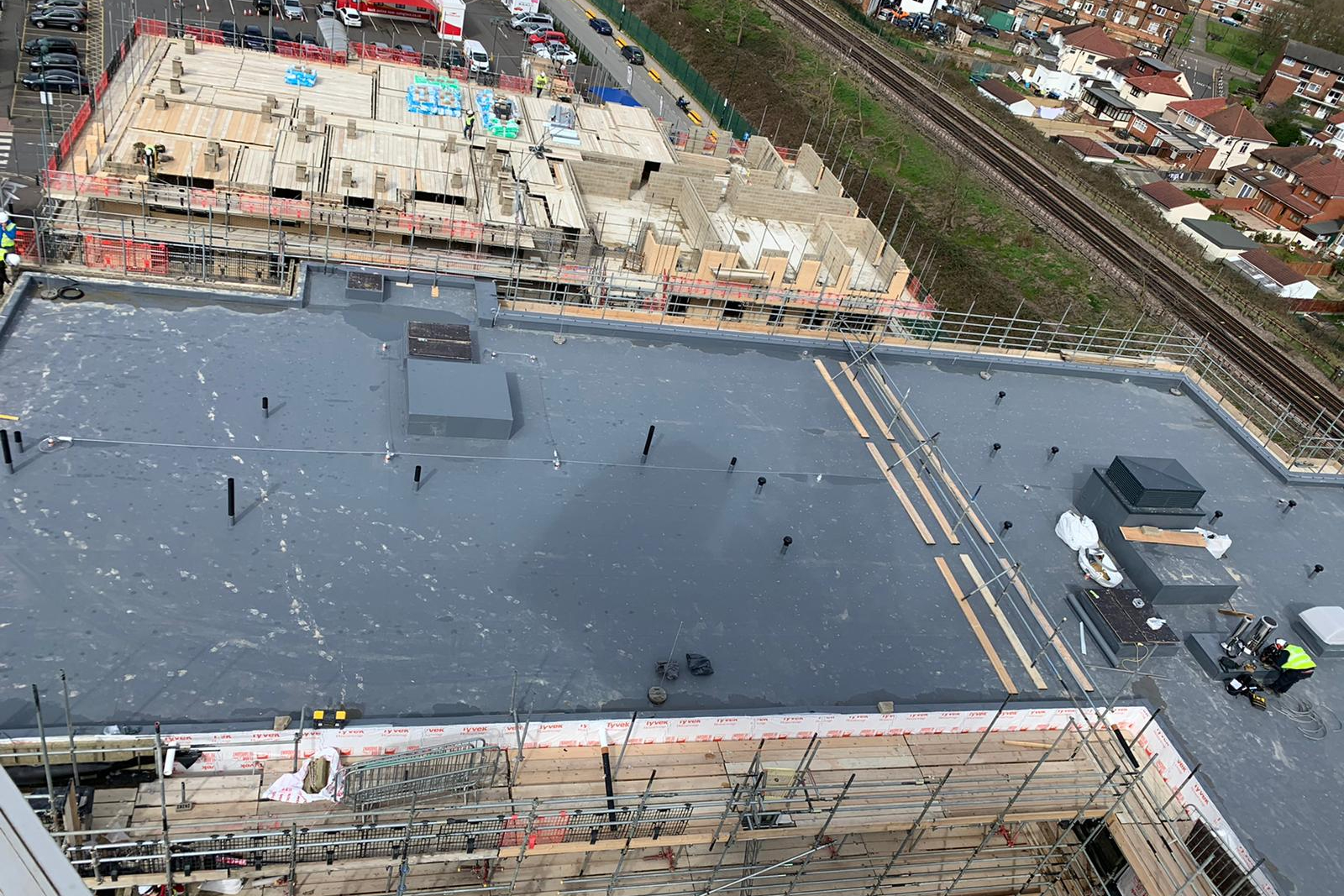
When working with hot melt or torch-on systems, the roofing environment can easily become hazardous. But, if workers are committed to following the right safety procedures and have an attitude where safety always comes first, any potential hazards can just as easily be avoided.
We’ve just issued all our operatives with a detailed Toolbox Talk to ensure their understanding of this issue is completely up-to-date. Here we share some of the key points:
Beware of distractions
Distractions can come at us from every angle – from our phones, from colleagues and from issues that we might be experiencing outside of work (e.g. financial worries or family problems).
Some distractions do have positive sides (e.g. socialising with colleagues during a break) but, when things cause you to lose focus during worktime, that can impact negatively on safety. So, avoid social media during working hours; stay friendly with workmates but don’t get involved with horseplay or anything similar; and if you are going through something personal that is affecting your focus at work, reach out to a supervisor or someone you trust for help.
What’s the rush?
While it’s natural to want to get a job done as quickly as possible, in construction rushing can have major consequences, resulting in accidents, errors, and actually more time having to be spent on the job in the long run.
Over and above the need to complete a job quickly should be the need to do it correctly and safely. One of the keys to developing a good safety attitude that will help you avoid the temptation to rush is to pull yourself up any time you find yourself thinking “I don’t have the time for that”. Whether that’s about putting on the right protective equipment, following a particular safety protocol or reviewing an operating manual, be sure to make the time.
Do the best job you can – not the fastest job you can.
Water is the enemy
If hot bitumen comes into contact with water, there is a risk of a violent reaction. When these two substances come together, the water component evaporates and expands in volume, which can lead to splattering or boil-over.
So, when loading a keg of bitumen in the hot melt machine make sure it’s not wet and make sure there is no trapped water in storage tank. The most common reason for boil-over is hot bitumen being loaded in a hot melt machine that has previously contained bitumen emulsion. As the water in the emulsion vaporises and expands, the pressure increases – eventually becoming so high that the steam will push the bitumen through the manhole. If the tank is closed, the increased pressure can cause an explosion.
PPE
When working with a hot melt machine or with the torch-on system, operatives must wear the following:
- Safety helmet
- Eye protection goggles
- Heat resistant gauntlets/gloves (Ensure that no bitumen can run into the gloves)
- Protective overalls with long sleeves and legs, worn over rigger-style boots (No jogging bottoms or T-shirts allowed)
- Safety boots (No shoes, sandals, clogs, or trainers)
Other essential kit
While it’s important to focus on the prevention of accidents, it’s also vital to be prepared for anyt slip ups that might occur. That’s why, with these kinds of works, you must always keep some other essential kit items nearby. That includes:
- A bucket with water next to the hot melt machine
- 2 types of extinguisher near the hot melt machine and the gas bottle: Water and Foam
- A fully stocked first aid and burns kit (along with clear signage as to who the First Aiders on site are).
Talking of First Aid
Administering first aid in the event of burns should only ever be attempted by someone who is confident in the correct procedure.
Bitumen burns should be cooled for at least 15 minutes, first with cool water to reduce pain, then with warm water to prevent hypothermia if the burned surface is larger than the size of a hand. Burns to the eyes should be irrigated for at least 5 minutes.
No attempt should be made to remove the bitumen at the work site by unqualified personnel.
The ‘DO’s and ‘DON’Ts’ of working with a hot melt machine
- DO NOT put tools and rags contaminated with tar in your pockets.
- DO NOT interfere with the manufacturer’s setting on present pressure regulators. Use only the supplied pressure hose for connecting the appliance to the regulator. Badly worn or damaged hoses or hoses covered in bitumen must not be used. Cylinders should be connected or changed in the open air wherever possible.
- CHECK that all valves on the cylinders and equipment are turned off before connecting or disconnecting.
- CHECK that the sealing washers are correctly positioned and in good condition.
- CHECK for leaks after connecting and before lighting the equipment. Leaks can be detected by sound, smell and the use of soapy water.
- If there is any smell of gas after ignition, turn off the gas at the cylinder immediately and investigate.
- If the burner flame dies down or goes out, turn off the gas at the cylinder immediately and investigate the cause before re-lighting.
- On boilers or cauldrons, always position the LPG containers in use at least 3m (10 ft) from the burner equipment.
- ENSURE the hose is not twisted and does not pass under the boiler.
- DO NOT use the equipment near combustible materials
- DO NOT use the equipment in a badly ventilated area where fumes can build up.
- When more than one gas container is being used with one appliance, the correct manifold must be used. All cylinder valves should be kept open during operation. Cylinders will frost up during long periods of work on cold days. DO NOT attempt to heat them however bad the frost.
- DO NOT tow or transport a boiler or cauldron with the burner alight.
- DO NOT, under any circumstances, allow water to get into the hot tar.
- DO NOT leave the boiler or cauldron unattended with the burner alight. Turn off the valves on both the cylinder and the equipment after use
Alongside the points featured in this blog, there is much more that anyone working with hot melt or torch-on systems should be aware of. There are method statements and risk assessments around everything from the setting up stage to protocols around changing the gas bottles. To give you and your site the best chance of staying hazard and accident free, always keep your knowledge up to date, stay focused on the job and put safety first.
11/03/2021
Feature image: Sheriff Construction








